It’s been 2 years since we got married, got rid of all of our stuff, and left San Francisco to become nomads and slow travel the world! Year 1 was amazing, we were living out our dream lifestyle to see the world and staying in some really cool cities. Plus, we were able to do all of that for half the cost of living at home in San Francisco. Coming into year 2, we were becoming seasoned nomads and getting into a rhythm of enjoying new places, eating delicious meals, exploring nature, settling into monthly apartments, and even making new nomad friends. We learned a lot from year 1 and applied similar money saving techniques such as booking long-term Airbnbs and using airline reward points. We had exciting plans for 2020 but like the rest of the world, we had to quickly adjust when the pandemic hit in March. As a result, we became grounded nomads and had to decide where we wanted to wait things out for the last 4 months of year 2. This also involved canceling a lot of flights and Airbnb bookings.
Luckily we decided to be in Taiwan, it was a really fortunate choice because the situation has been under control and we are able to explore this beautiful country. The cost of living fits within our travel budget and hasn’t been a financial strain to stay for 4 months (unlike being stuck in more costly Japan which was our original March destination). Also, we have been able to get most of our canceled bookings refunded and weren’t set back much from the change of plans. After digging into our finances to finalize our expenses for Year 2, the results are pretty exciting. In a nutshell, in the last 12 months, we slow traveled to 16 locations in 9 countries for – once again – half the cost of living in San Francisco.
But more than reducing our spending, geo-arbitrage lets us rebalance our expenses towards activities that we enjoy the most, spending more time with our respective families, living a less stressful life and exploring new places in the world. And in the case of the last 4 months during the pandemic, it has allowed us to be flexible and to choose a home base that made the most sense for us.
Are you ready to dig into our spending report for our second year of nomadic living?
Where did we go? What did we see?
After spending our first year of nomad life mostly in the Americas, we spent our second year between Europe and Southeast Asia. We explored 9 countries and stayed in 16 locations (vs 10 locations in our first year).
This increase in the number of places we visited was due to a few things:
- Mrs. NN quit her job in March 2019 so we were less restricted by time zone
- We experimented with a bit of fast travel (ie. staying in a place for 7-10 days at a time)
- The pandemic kept us grounded in Taiwan since March 2020 but we’ve been able to explore within Taiwan.
During this time we were able to spend 9 days in Costa Brava (Spain), 1 month in Porto (Portugal), 3 weeks in Lisbon (Portugal) – including a weekend getaway in the Douro Valley, 1 month in France w/ Family, 3 weeks in Kotor (Montenegro), 5 weeks in ChiangMai (Thailand), 1 month in Koh Lanta (Thailand), 1 week on Koh Lipe (Thailand), 1 week in Langkawi (Malaysia), 1 month in George Town (Malaysia), 1 week in Tanah Rata (Malaysia), ~2 weeks in Kuala Lumpur (Malaysia), 1 month in Da Nang (Vietnam), 1 month in Ubud (Indonesia) and 3 months in Taipei (Taiwan) during the COVID-19 global pandemic.


(without our trip back home unfortunately due to the pandemic :-/)
Year 2 Highlights
While we have so many memories of our second year of nomadic living, let’s look at some of our highlights.
For me, traveling to Southeast Asia (SEA) for the first time was a major highlight. Besides the fact that I had never been to any SEA countries before, I loved each of the countries we visited.
- Thailand confirmed that you can live a very comfortable life for 22 USD per person and per day (see our detailed numbers of living in Chiang Mai). Chiang Mai in particular has shown me that there are places where you can easily connect with like-minded slow travelers (a concern we raised during our first year of nomadic travel). This is where we met a few couples like Brad & Myriam or Ryan & Emily (that we interviewed on our blog) and others. Chiang Mai was also a place where I strengthened my meditation practice, got amazing massages, great food, and stayed in modern apartment complexes for ~500 USD / month. While we felt that living in Aruba for 47 USD per person and per day ($3K / month) was a pretty sweet deal, Koh Lanta ended up being an even better paradise for only 21 USD per person and per day!
Check out both videos we did from both Aruba and Koh Lanta and let us know which one you would like to go to!
Which paradise destination would you prefer?
- Malaysia was all about the food (especially GeorgeTown) and also beautiful places (Cameron Highlands being on top of the list). The food in Georgetown was at a very different level than what we had in Thailand which was already amazing.
- Da Nang (Vietnam) was ultimately a great nomad hub. It has an easier visa situation (compared to Thailand) and while we only explored Da Nang, this place feels quickly like home.
- Bali (Indonesia) was the ultimate relaxing experience. We stayed in a villa with a couple we met in Chiang Mai and we loved it! And while we had to escape from Bali due to the pandemic, we want to go back as this is a wonderful place to disconnect, recharge and eat extremely healthy foods.
And while we weren’t planning to visit Taiwan this year, I was very pleasantly surprised by how rich and close to nature this island is. We still have 2.5 months of our visa remaining here and we are so looking forward to continuing exploring! (Check out our Taiwan report from March, April and May to get a taste of it).
Did we break the bank in Year 2 of nomadic travel?
(Note: if you are new to this blog and want more context about our spending as nomads, check out our previous reports including our 2018 Year-End spending report, our 2019 Year-End spending report and our 1st year of nomadic travel)
Ok so this is probably what you’ve been waiting for in this post: our numbers and here they are! For our Year 2 of nomad travel between Europe, SEA, and Taipei, we spent about $30K! (or $30,078.93 to be exact).
Our budget for a full year of slow travel to discover 16 amazing destinations (in 9 different countries) for our second year of nomadic travel ended up being $30,078!
Here is a breakdown of this spending overall between total cost and also living cost (which excludes all non-living expenses).

Note: We like to track living costs on its own as we are building a cost of living index in each country we visit so we have an idea what our budget would be if we would like to spend an extended period of time in a city we fall in love with. We will cover this later in this post.
Spending per category
$30K for a full year of nomadic travel to 9 countries isn’t much but the number itself doesn’t tell the whole story and you might want to know where we’ve been spending that money. So let’s take a look at our spending per category.

The first thing to notice is that out of the 19 categories we used to track our spending, 6 of them make up 80% of our spending. These top categories are Accommodation (39% or ~$11.6K), International Health Insurance (10% or $3K), Dining out (10% or ~$3K), Groceries (9% or ~$2.8K), International Transportation (6% or ~$1.8K) and then Entertainment (5% or ~$1.4K).
Accommodation: $11,622 / year (or ~$970 / month)
Our monthly accommodation budget of ~$970 / month is less than half of our rent in San Francisco. For this budget we lived in either large studios or full-sized one-bedrooms with kitchens, so we weren’t depriving ourselves when it came to our accommodation.
Don’t believe us? Then take a look at the place we stayed in Kotor (Montenegro) for $750 a month. Also, don’t forget to check out our ultimate guide to AirBnB to learn how we usually save 50% on your long term days!
International Health Insurance: $3149 / year (or ~$260 / month)
For our second year of nomadic travel, we did not have health insurance coverage from Mrs. NN’s employer since she resigned during Year 1 so we had to purchase coverage for ourselves. Since we are nomadic and live outside of the USA, we were able to get very affordable plans while still being able to get covered in California under the Affordable Care Act (ACA).
We used private health ex-pat insurance to get insured worldwide during this year with IMG Global. The total came out at $3131 / year for the two of us ($1224 for me and $1907 for Mrs. NN).
We also signed up for coverage in California under the Affordable Care Act for just $24 / year (or $1 per person and per month). This gave us a bronze plan with a high deductible. Our strategy here was to have coverage if anything catastrophic would happen when we come back to see friends and family. Signing up was a no brainer because we knew we were going to quality to get full premium credit (the full value of our plan would otherwise be around $10,000 / year). To know more about this, check out our article about our health insurance strategy as nomads).
For the day to day health care expenses, we actually don’t mind paying them out of pocket. Here is an extract of some of the healthcare-related expenses we had during our second year. As we see they are ridiculously low that we don’t need to get covered for them. We only covered ourselves for catastrophic care.

Dining out: $3107 / year (or $260 / month)
We have been enjoying 160 dinners and 100 lunches eating out during our second year of nomadic travel. As we practice intermittent fasting we only eat lunch and dinner so these 260 meals represented one-third of our total meals for the year. I will let you do the calculation for our average dinner or lunch 🙂 Traveling in low-cost countries within Southeast Asia makes eating out really affordable.
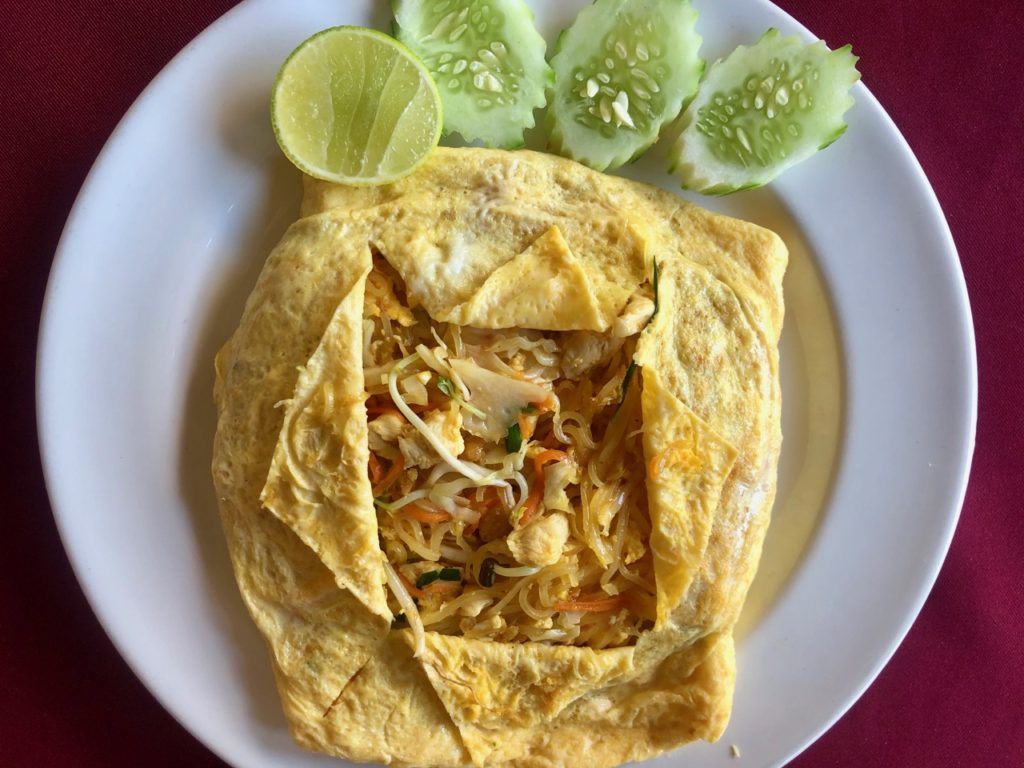
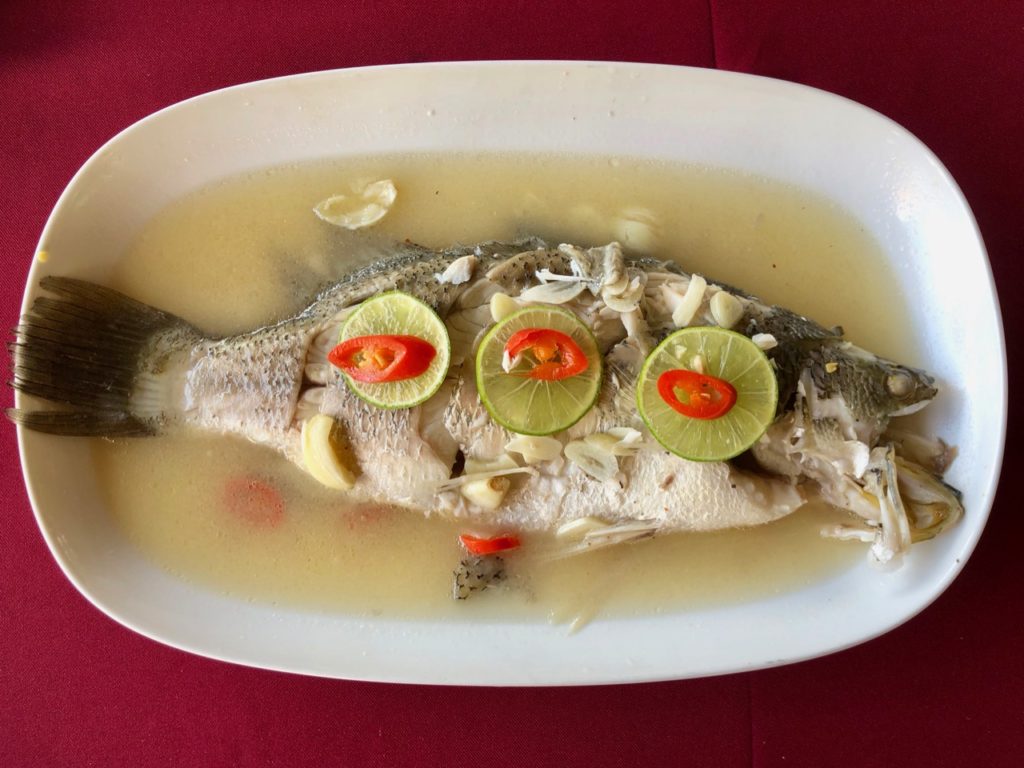
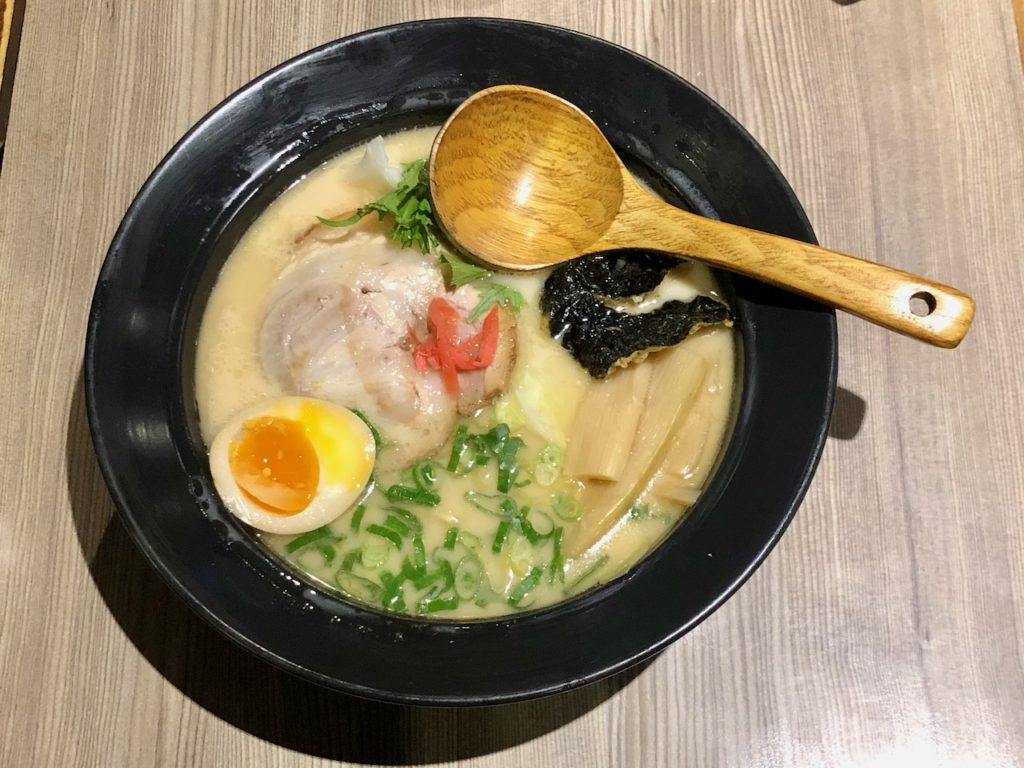
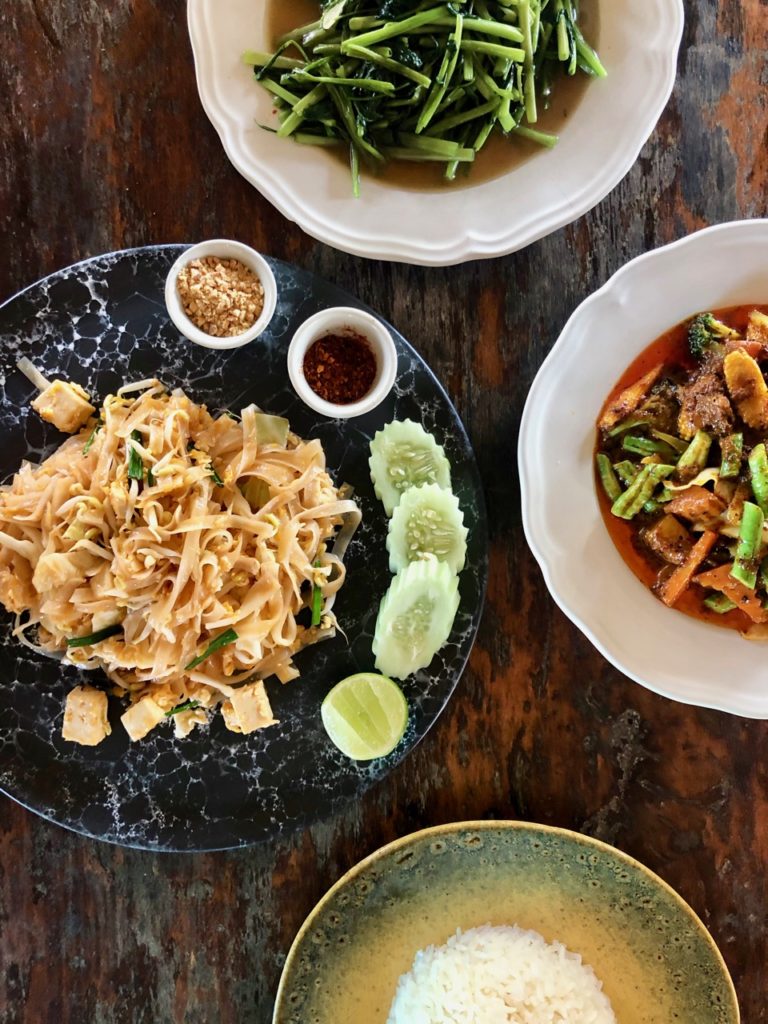
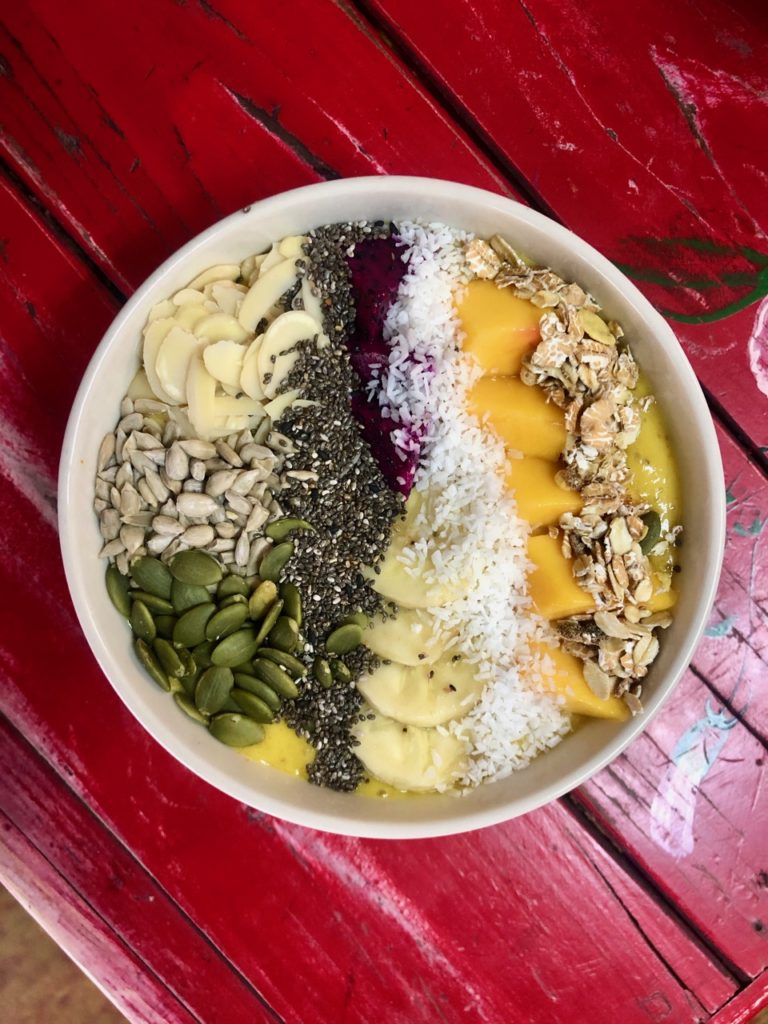
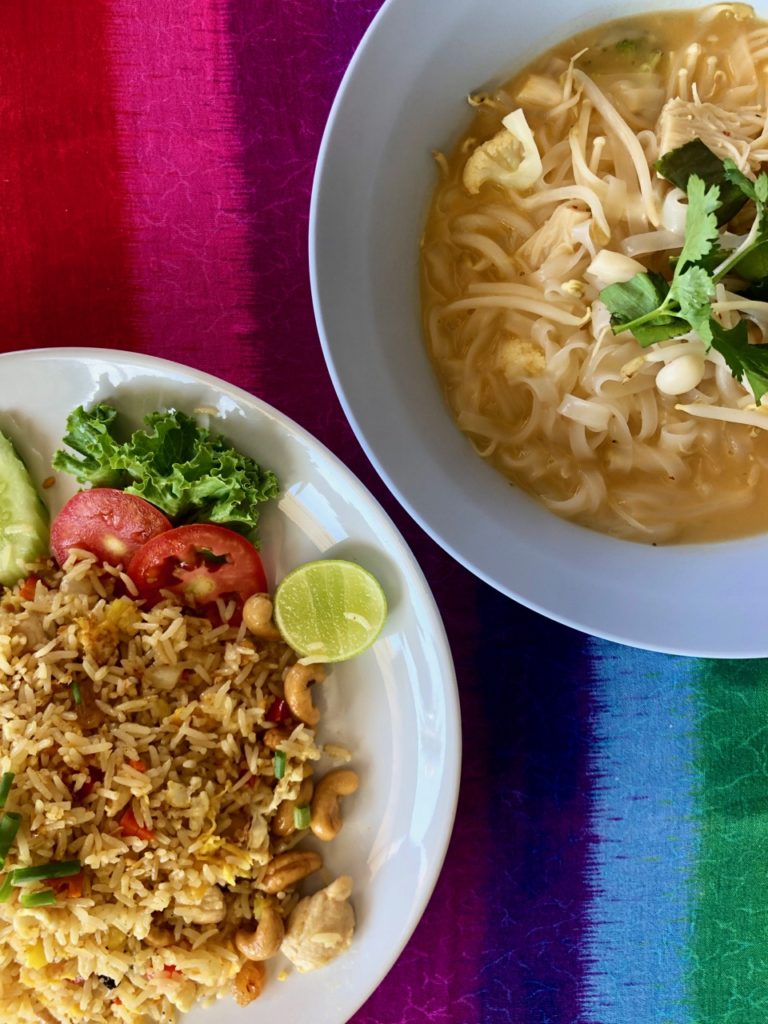
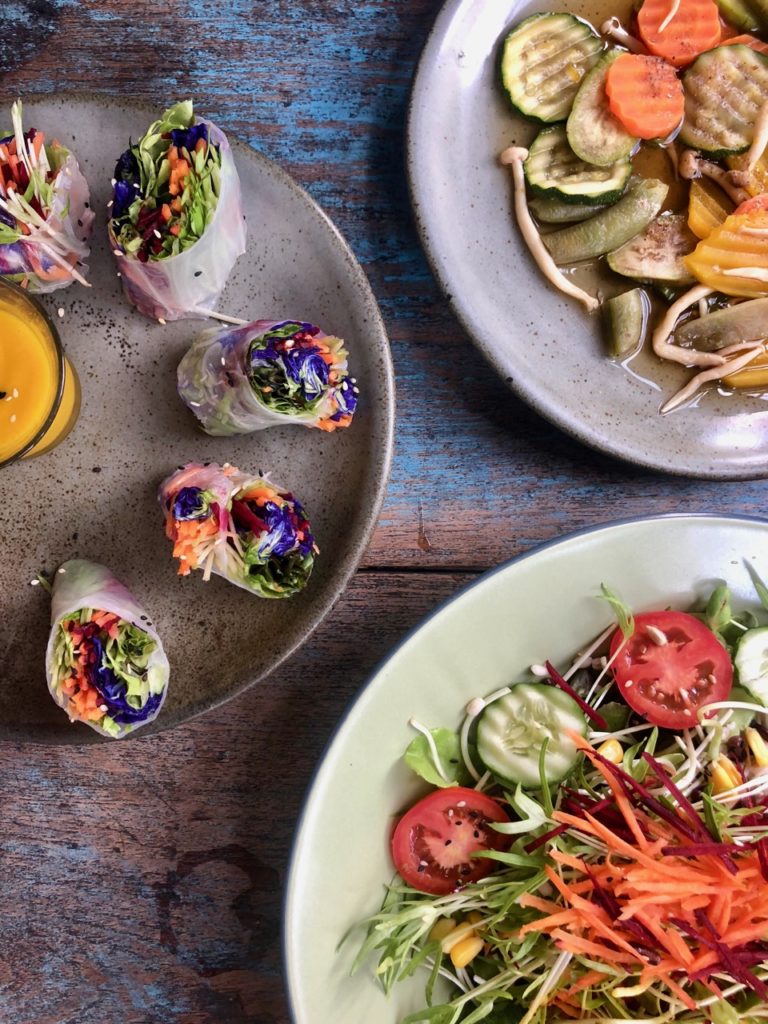
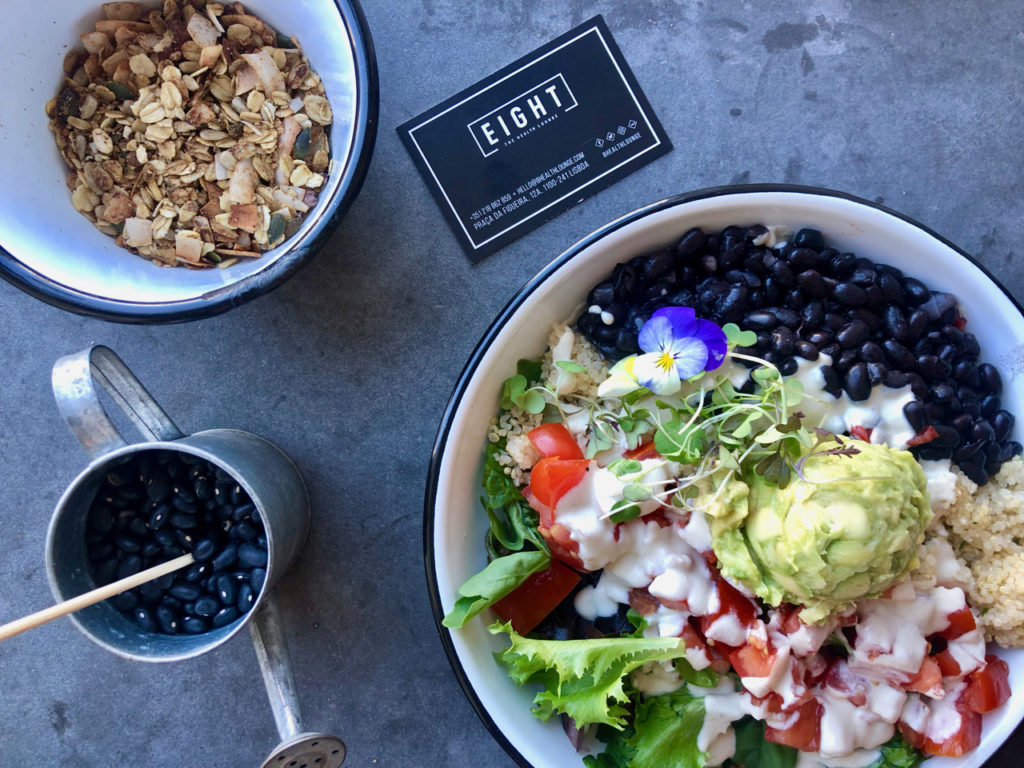
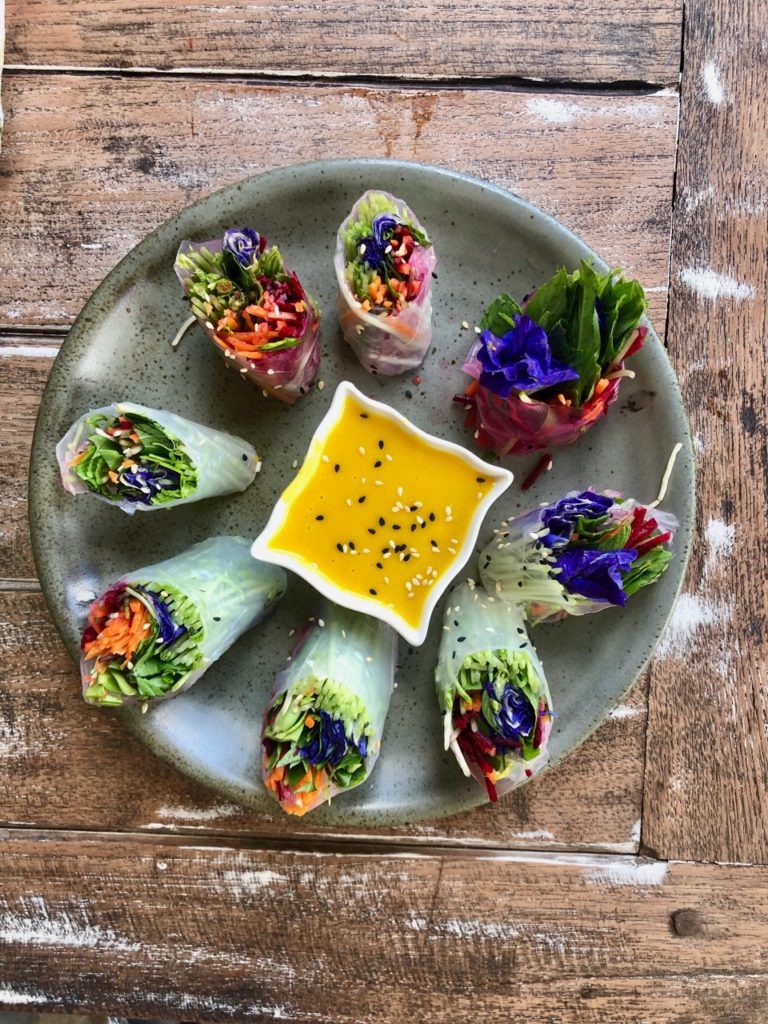
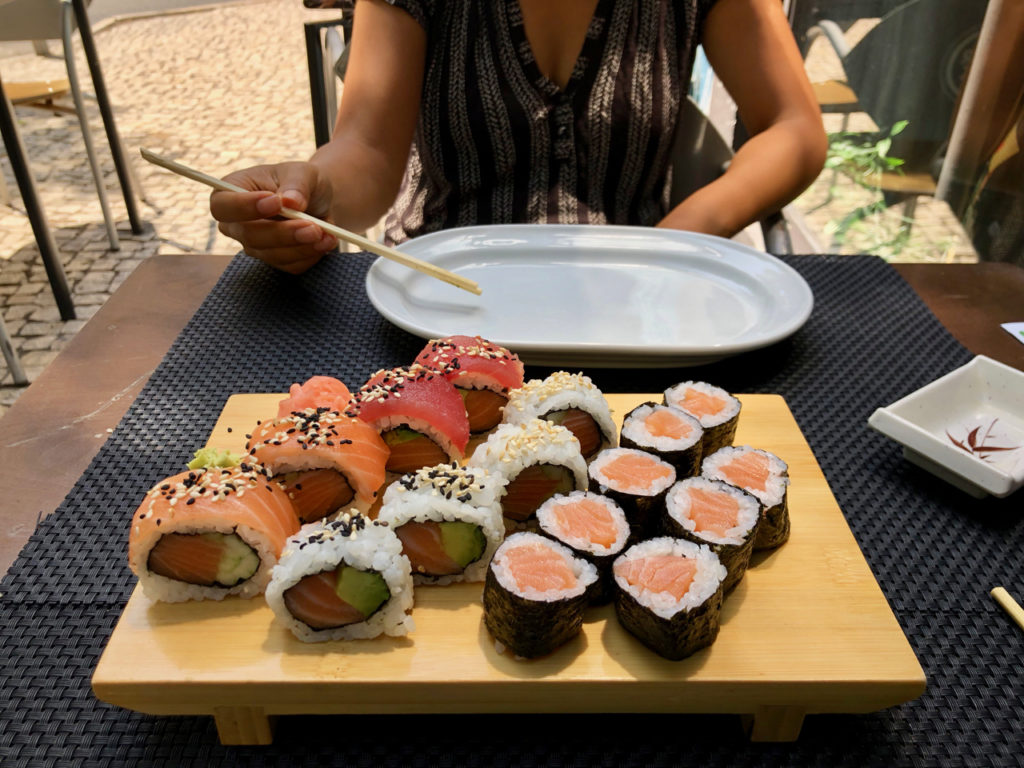
Groceries: $2787 / year (or $230 / month)
We prioritize our health above all so we also make sure to eat at home at least once a day (when we have some kitchen appliances) or usually most of the week otherwise. We love going to local farmer’s markets (with our zero waste kit) to enjoy great and really affordable produce to eat in season and enjoy really yummy food.
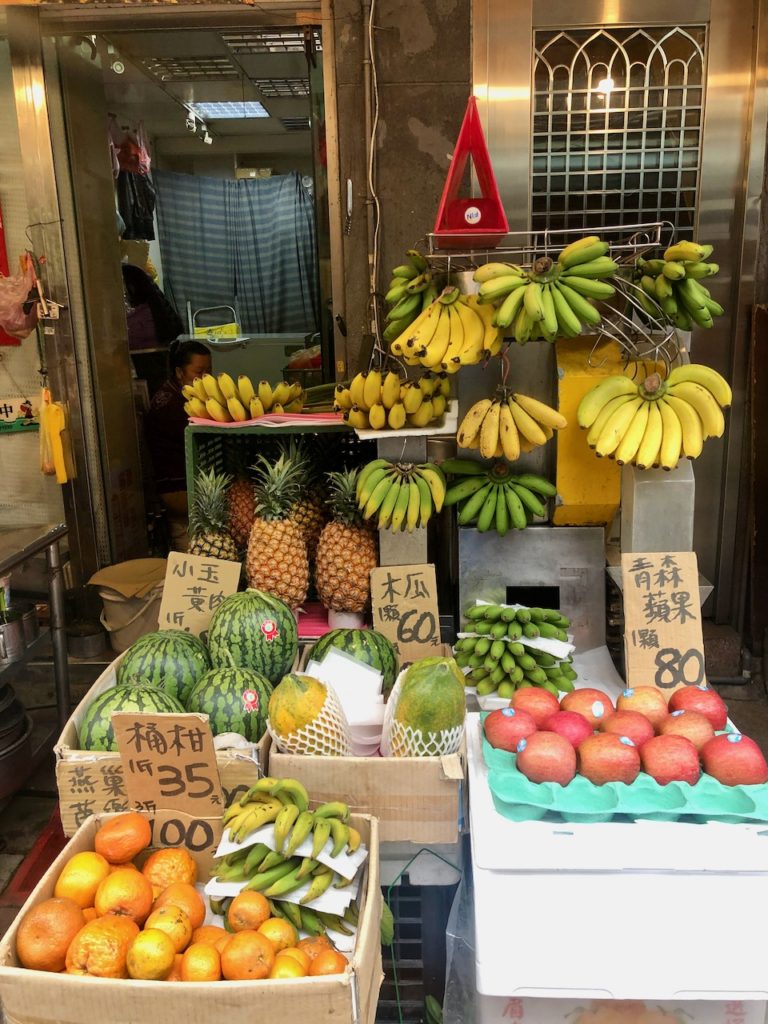
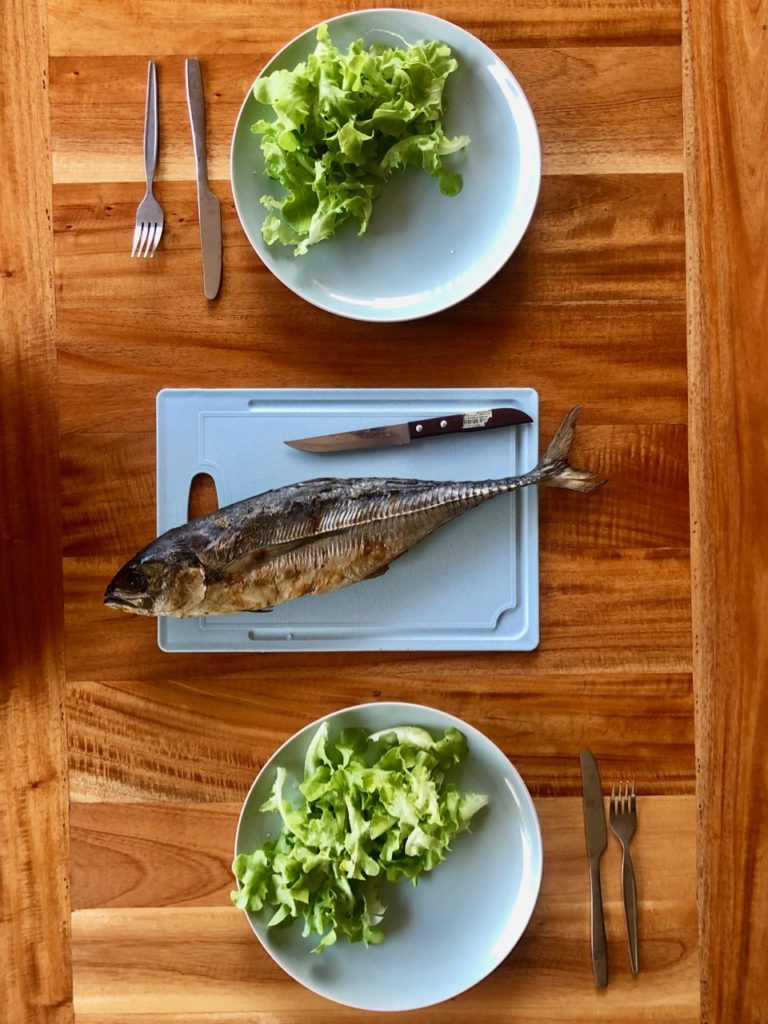
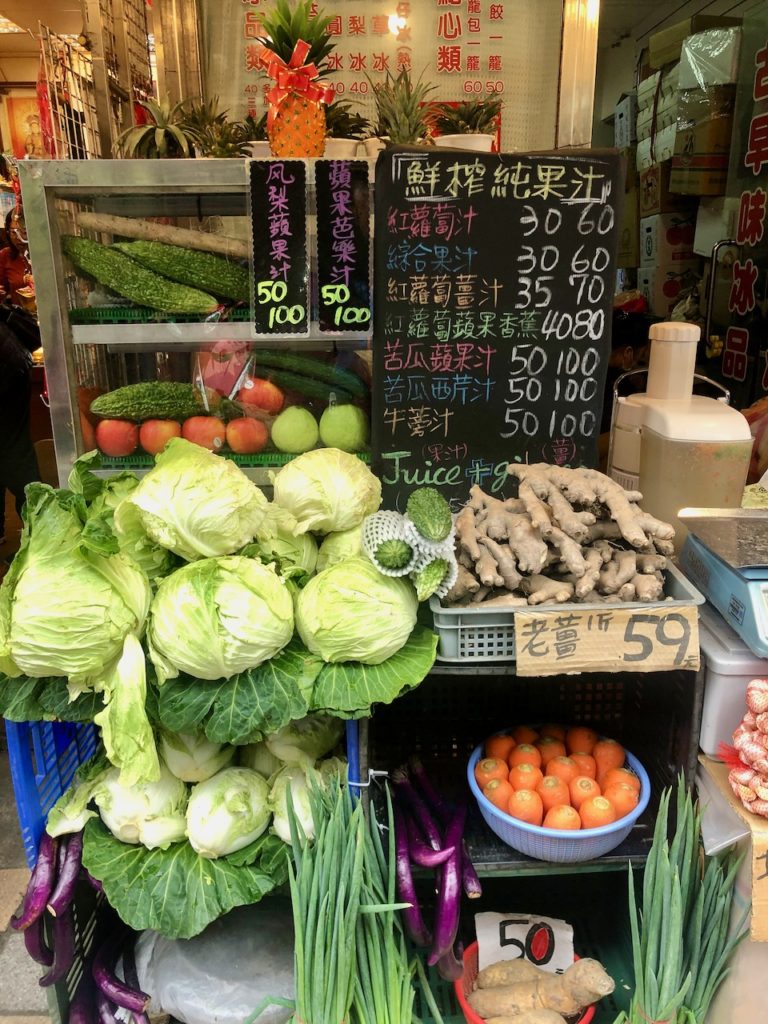
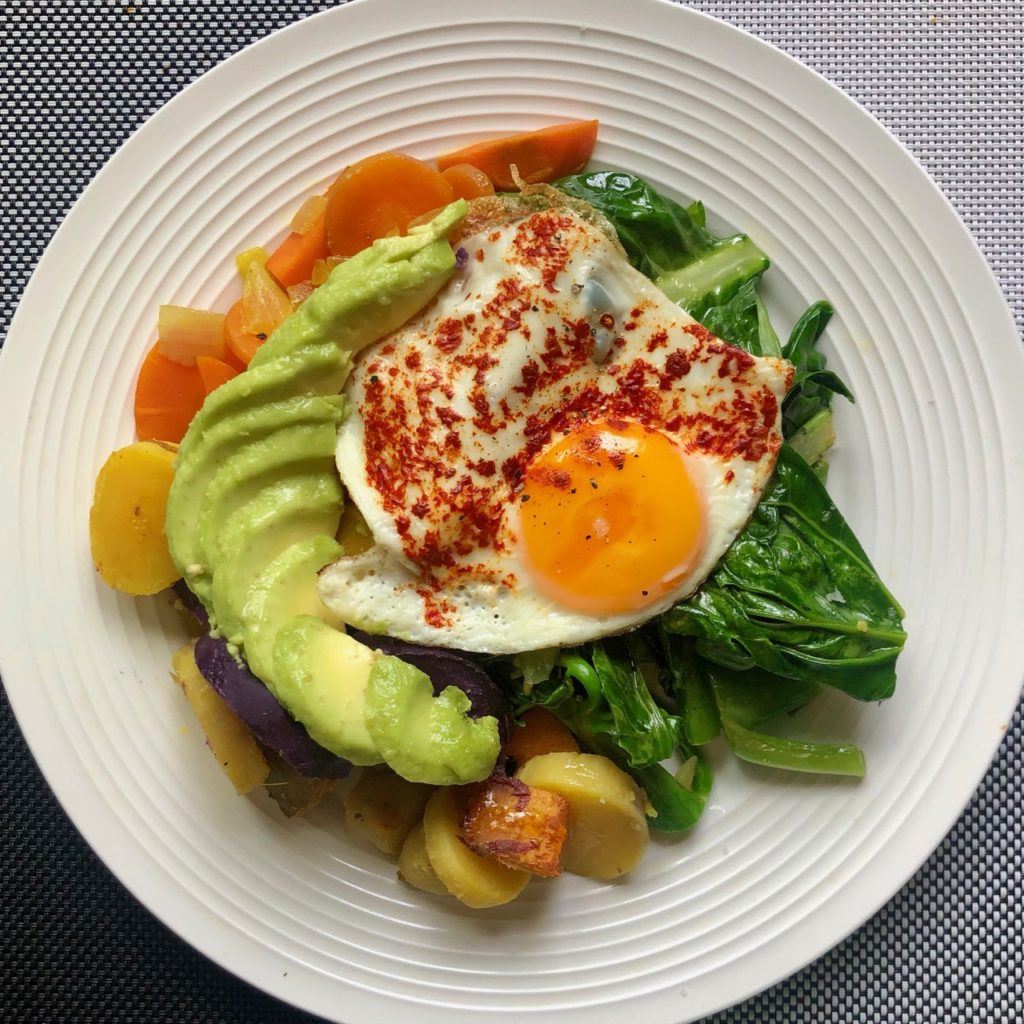
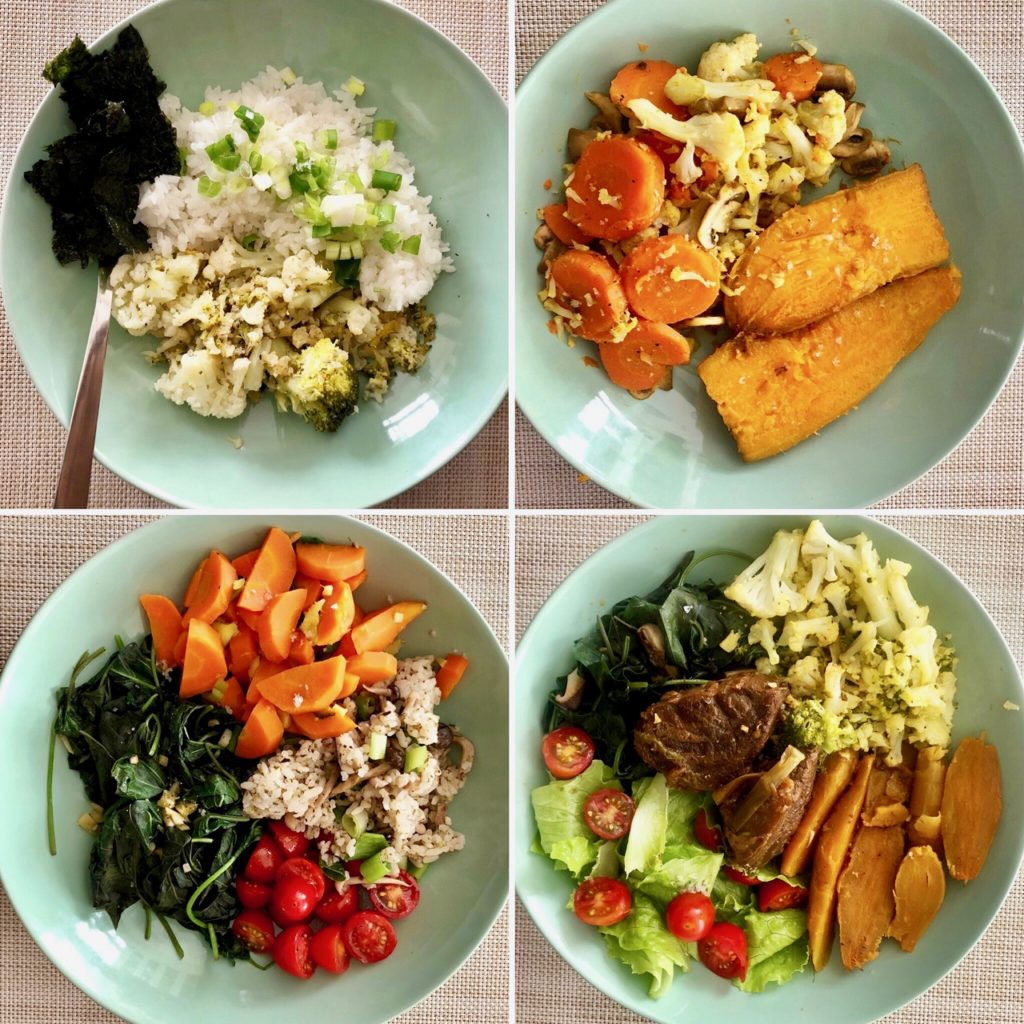
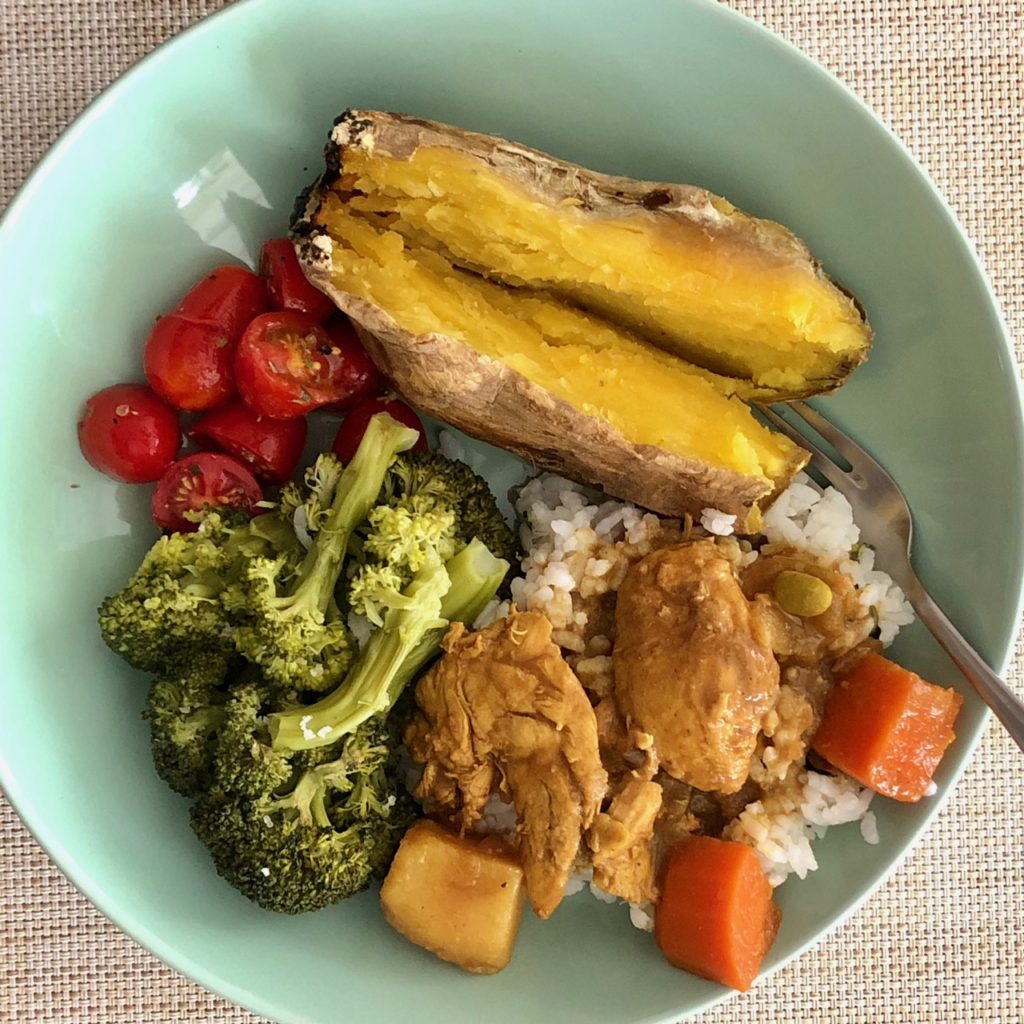
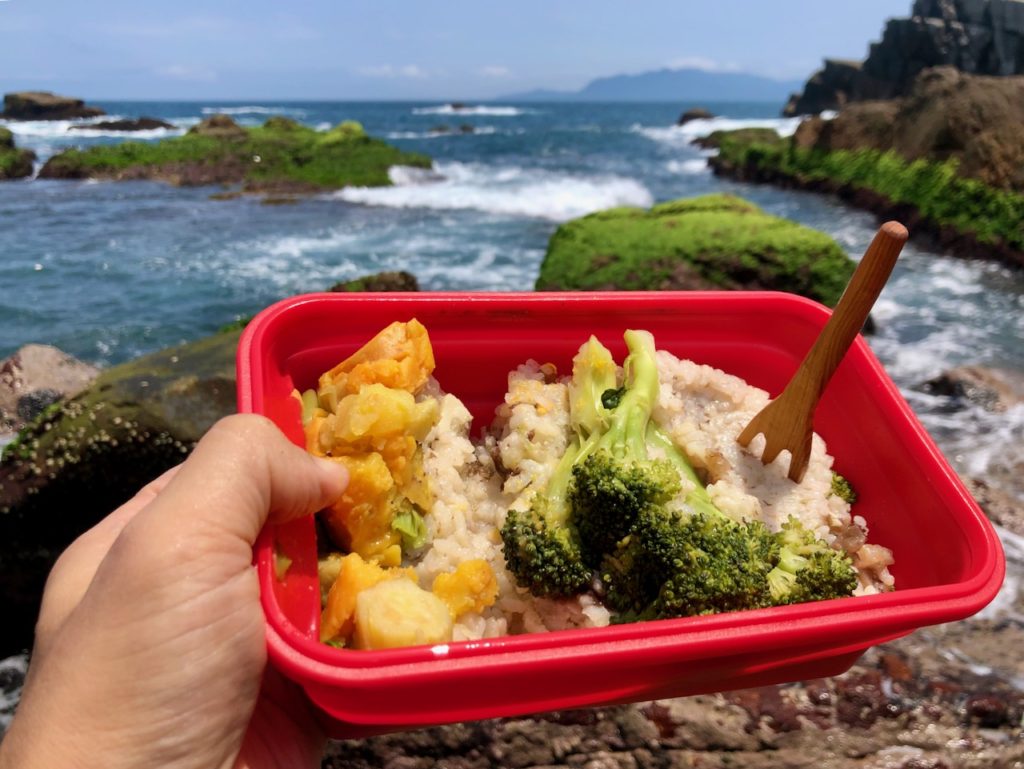
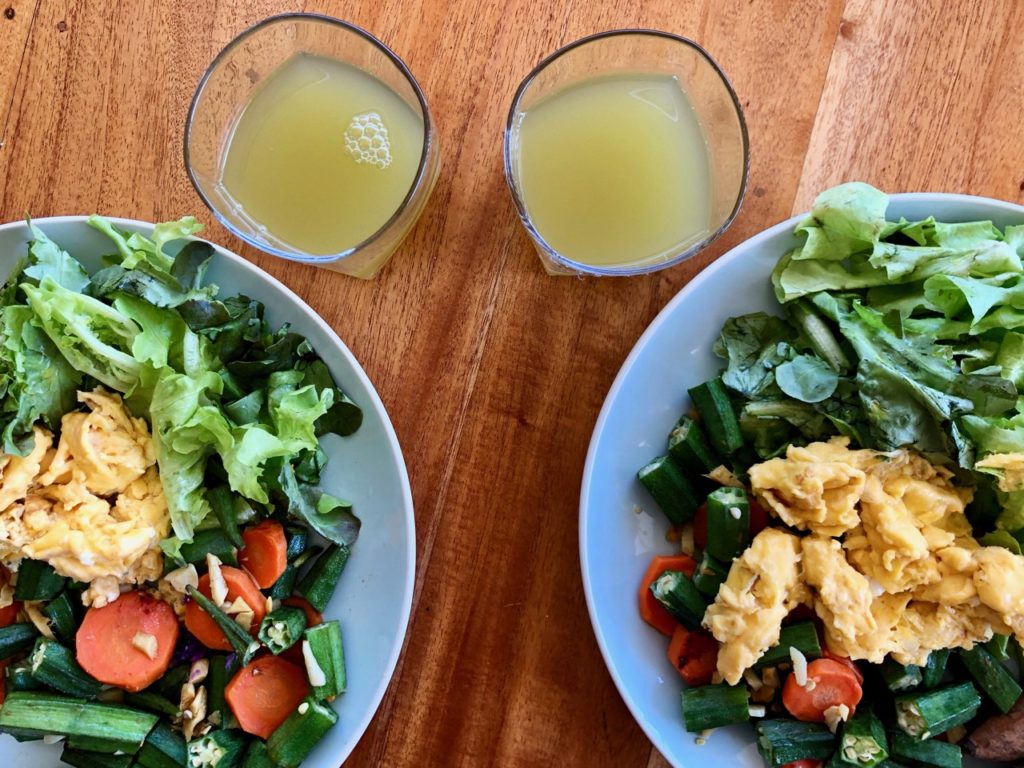
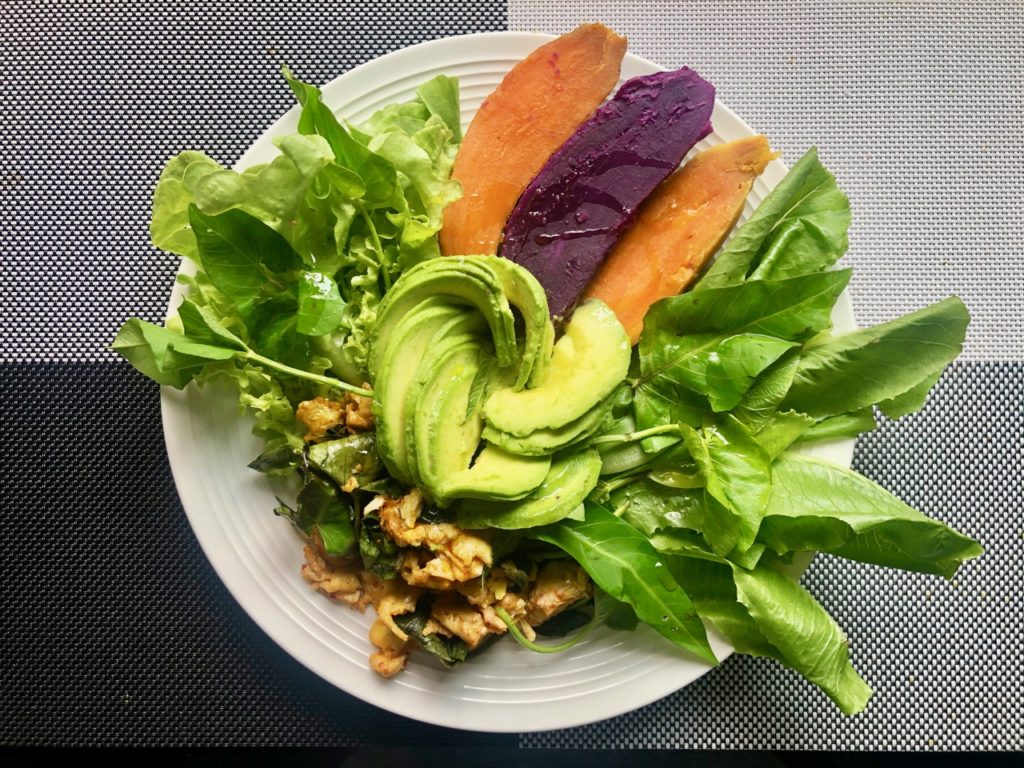
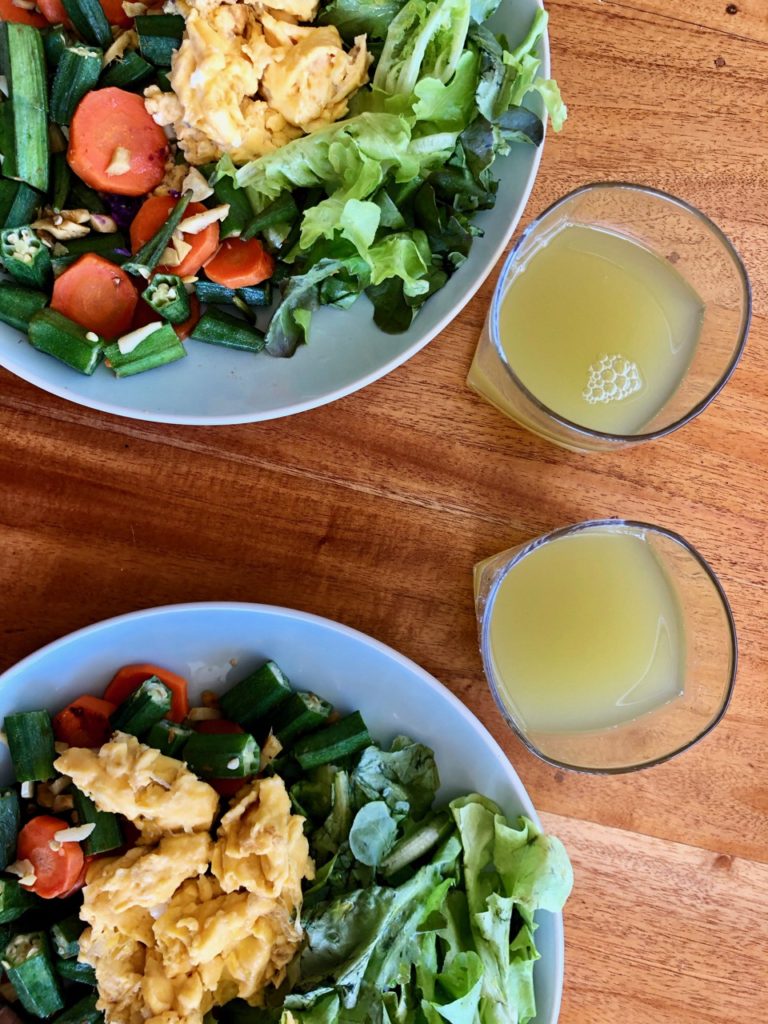
International Transportation: $1786 / year (or $150 / month)
While we visited 9 countries, we managed to keep our international transportation budget pretty low ($1,786 for the two of us). This averages to about $100 per person for each country we visited. We managed to achieve this thanks to travel rewards redemption (aka travel hacking) that lets us book most of our international flights with points instead of cash that we earned for free. Such an amazing benefit for nomads!
New to travel rewards? Check out our 2019 End of Year Travel Rewards Report where we share how we earned $10K in free travel money thanks to travel rewards in 2019 alone! and if you want to start also earning free travel money to be ready once borders reopen, check out our travel rewards article where we share our strategy and help you get started within minutes ).
Entertainment: $1380 / year (or $115 / month)
Snorkeling, scuba diving, cooking classes, meditation retreats, island boat tour, full-body massages, and more. Again we’ve been pretty happy to see that there are many places in Southeast Asia where you can treat yourself for not much. And since we love nature, a lot of activities (like hiking) only have transportation costs and a good backpack, pair of shoes and a water bottle!
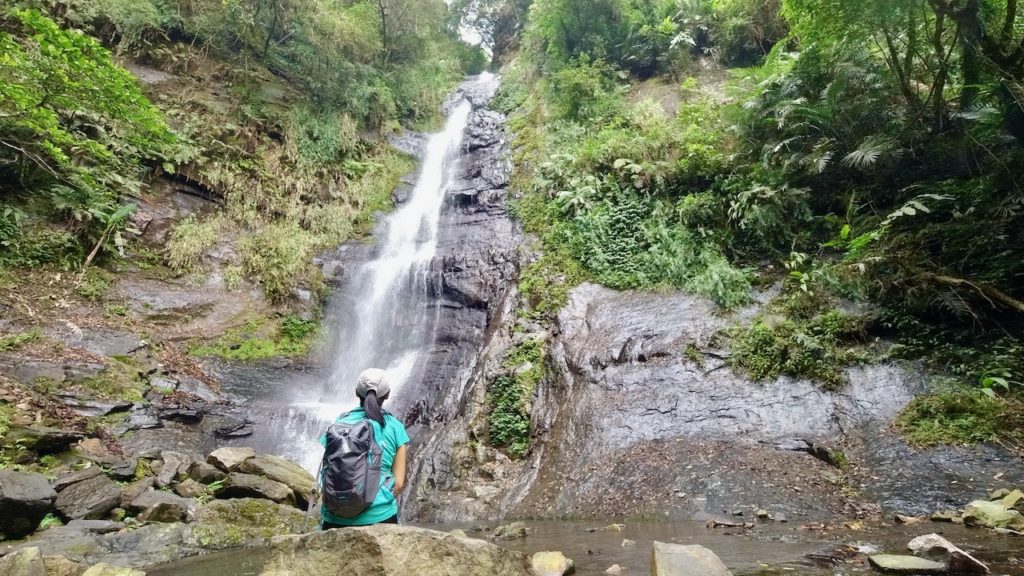
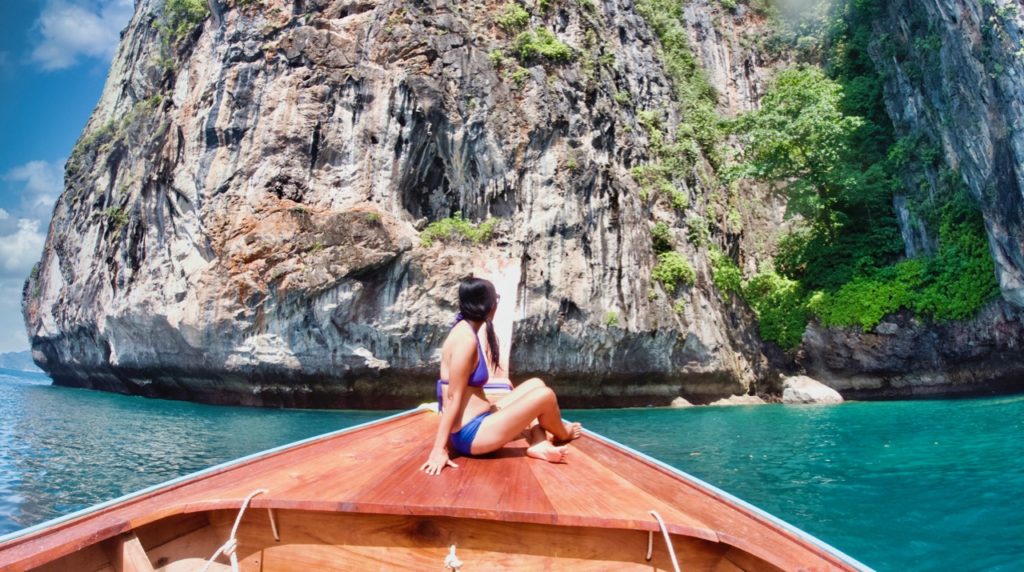
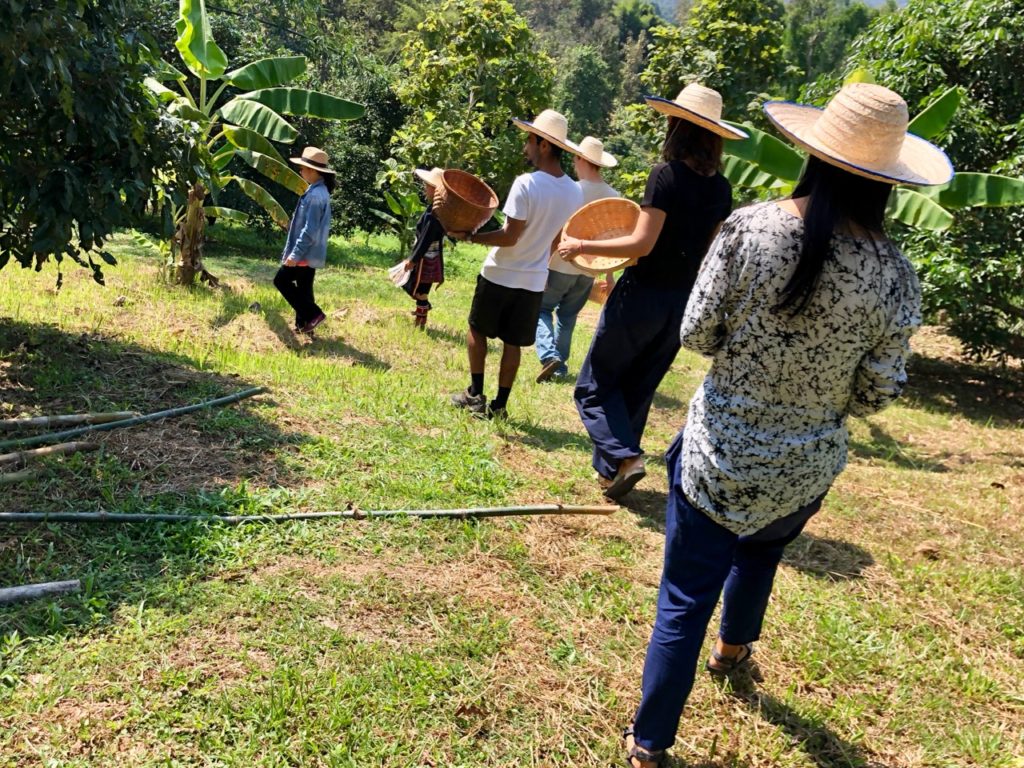
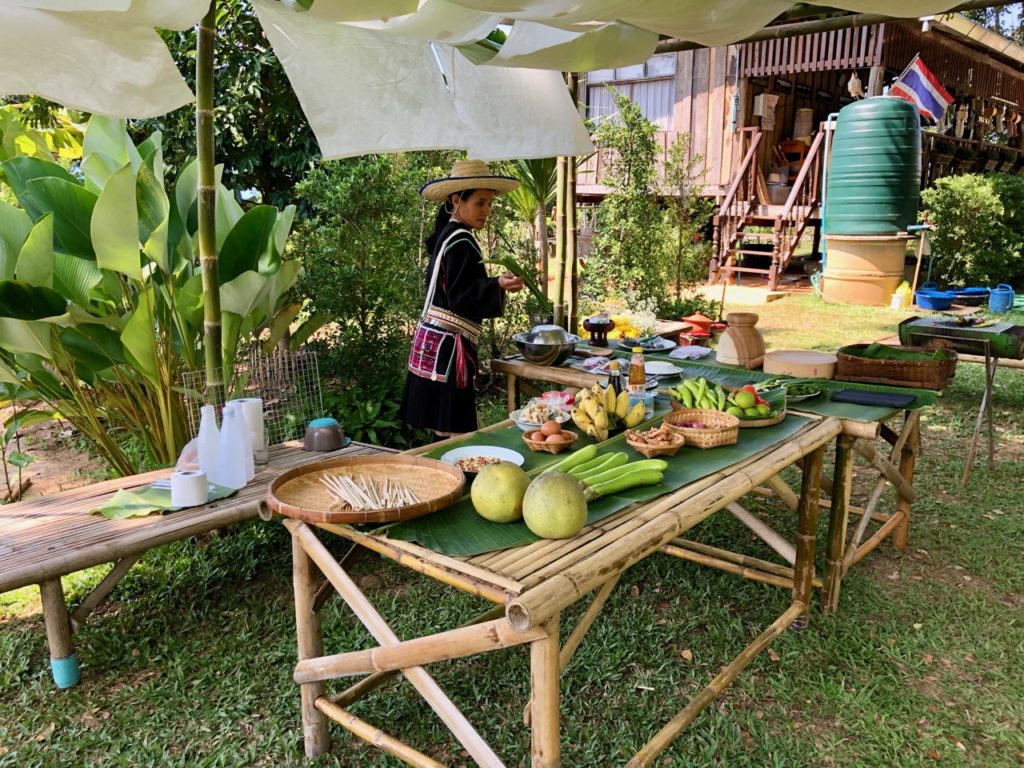
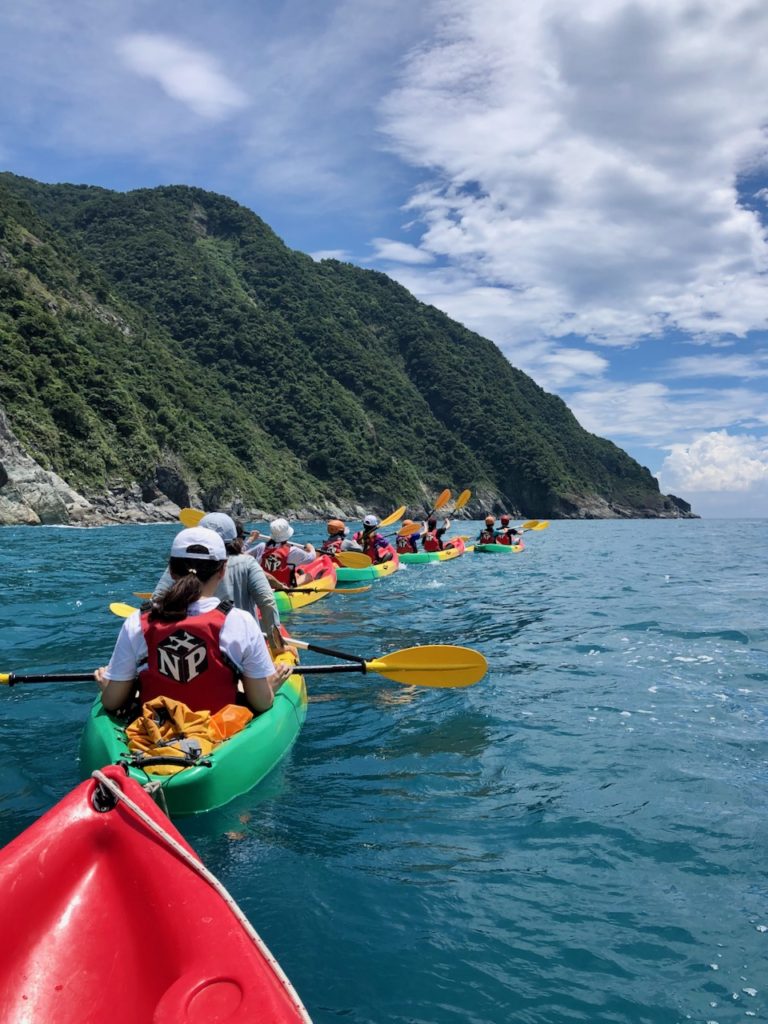
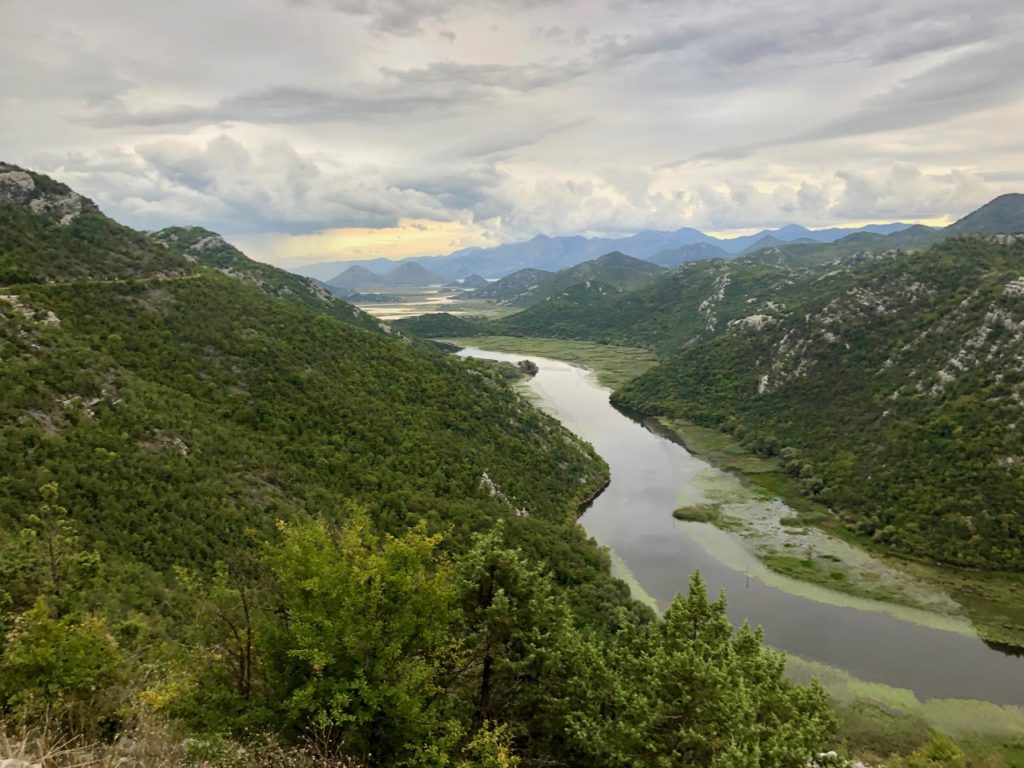
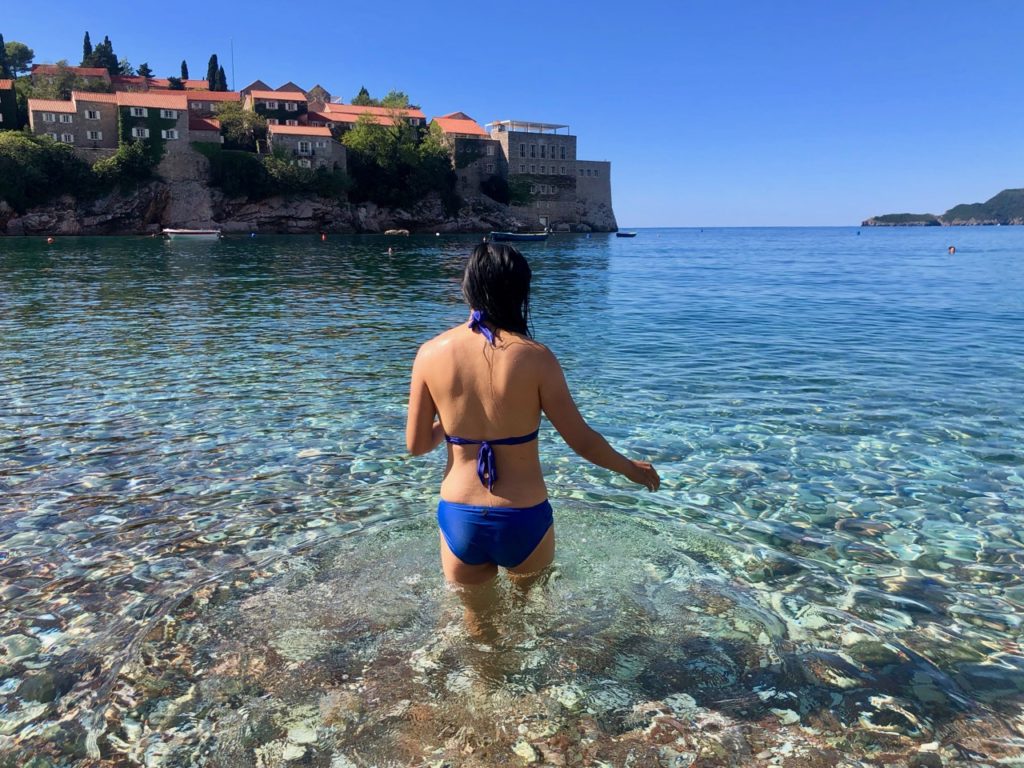
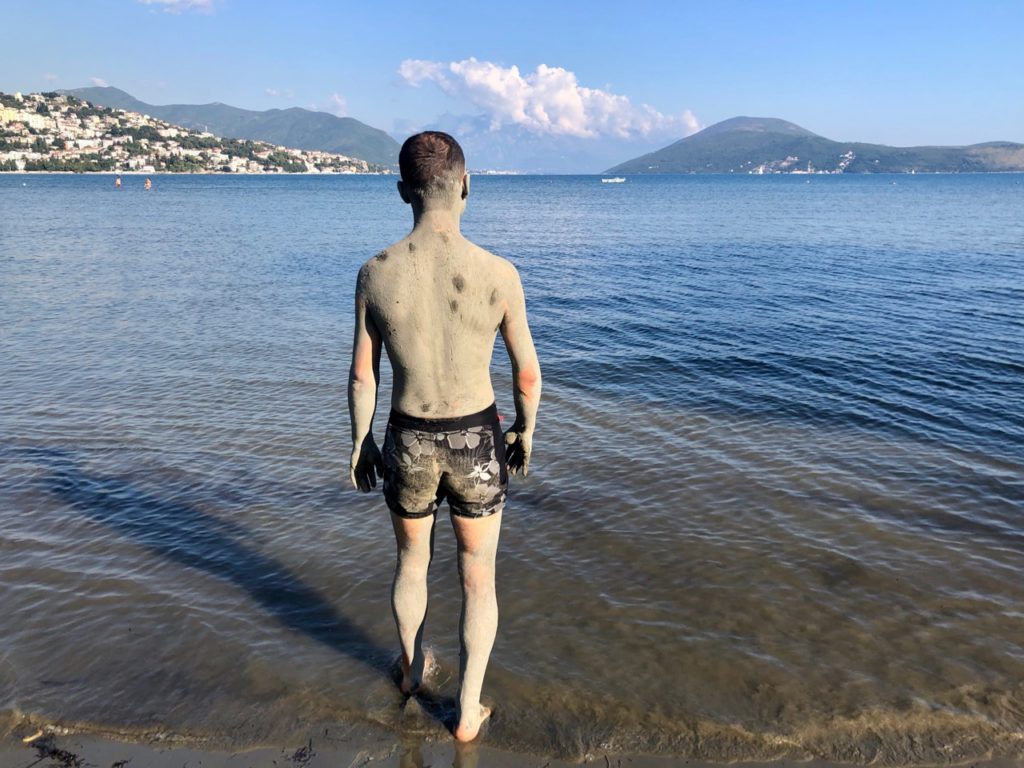
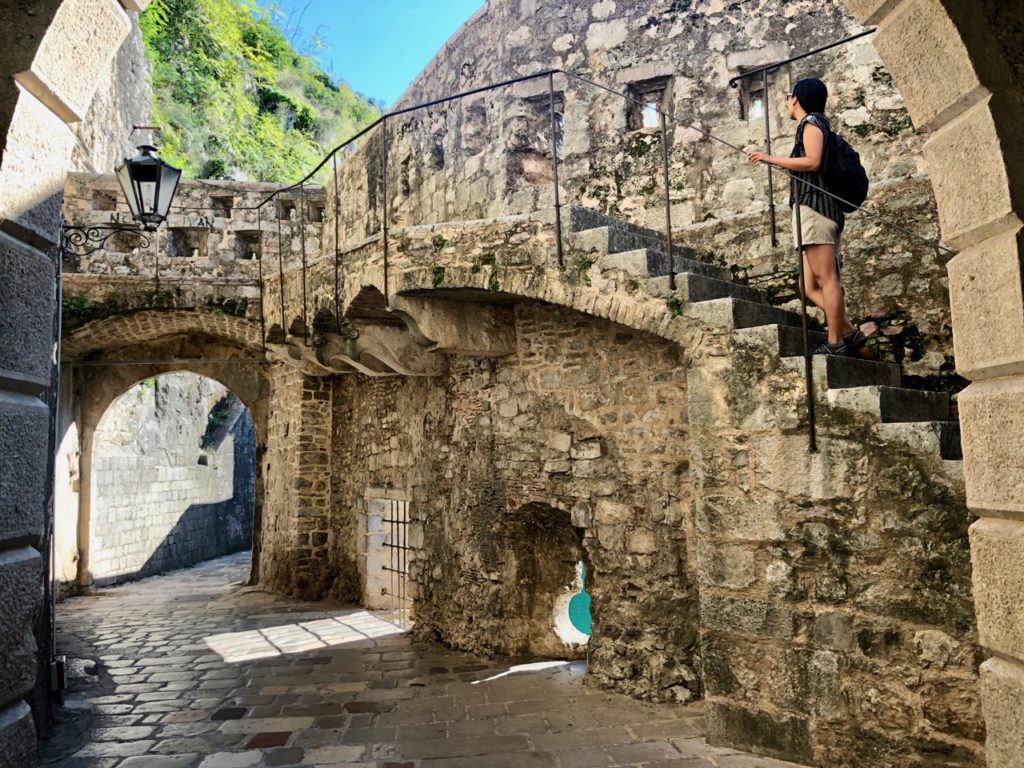
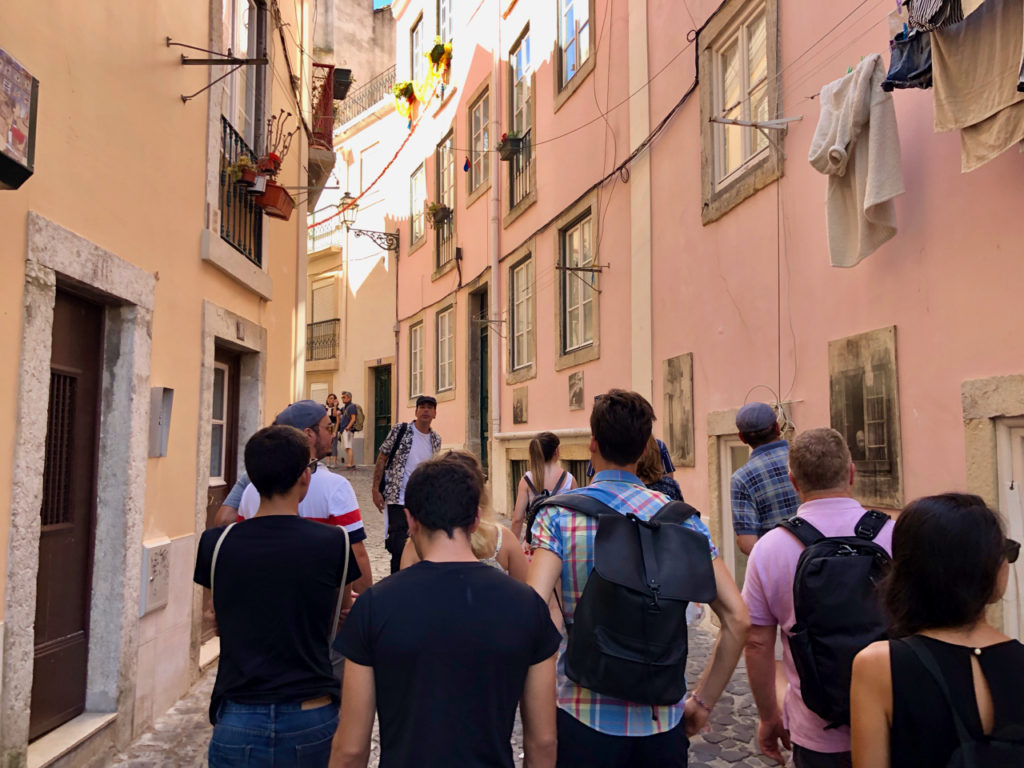
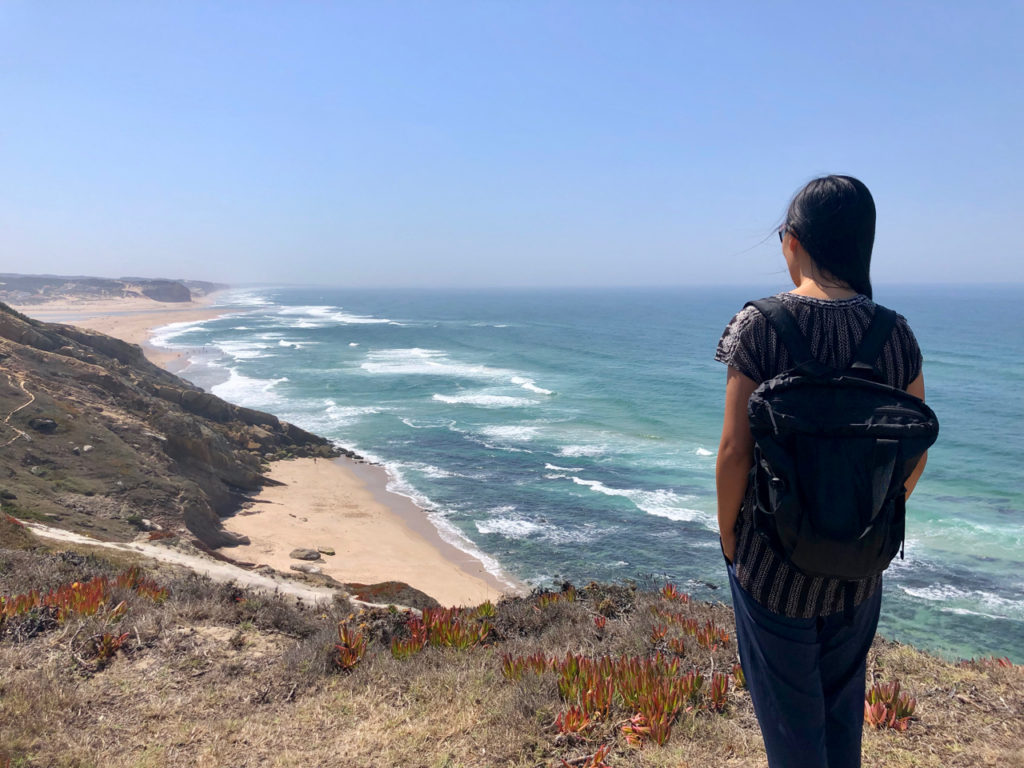

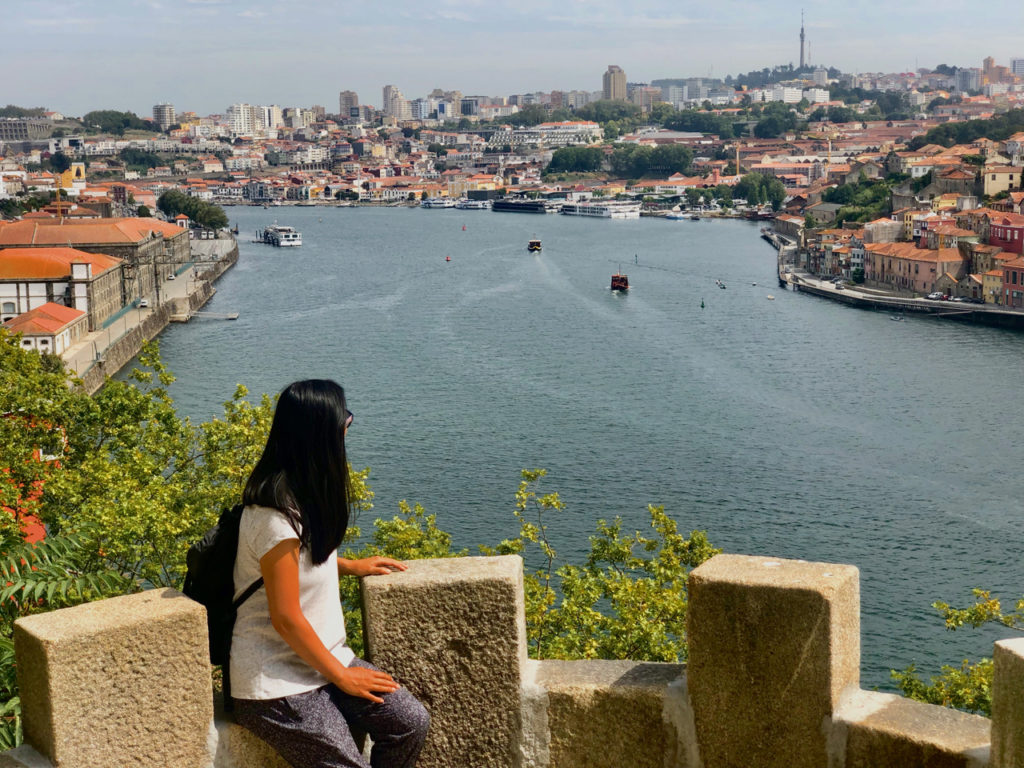
Spending per destination
Let’s now take a look at all the destinations we’ve visited during Year 2. We’ve put together the cost of living for each of the places with the daily budget. This cost of living represented is per person so we can normalize the data between destinations.

As you can see, the first top of the graph placed in Europe that ranged between $30 – 50 /day/person. Place in Asia ranged much lower between $20-$30 / day/person (with an exception for Koh Lipe where we treated ourselves for a nice week long getaway in paradise).
Note: To stay consistent in our reporting, we added at the bottom of the chart a line item called “Non living cost” that represents the costs that were not part of the living cost that occurred during that year.
A reminder about the power of geo-arbitrage (especially during a pandemic)
As we are tracking living costs in each country we’ve been traveling to, we can estimate what a full year of living in the country would be like. At a time when the world is in a global pandemic, this might be useful to decide where we want to spend an extended period of time (dependent on travel restrictions).

As you can see on the table above, 12 out of the 16 places we stayed at would cost us under $30K if we would stay a full year. Half of them (8 out of 16 places) would cost us below $20K. We are currently estimating that living in Taiwan for a full year would cost us about $22K and this includes keeping a normal lifestyle (with expenses like dining out and entertainment) as the country is free of COVID-19.
Also keep in mind that these are very conservative estimations as we would be able to reduce our expenses even further if we would have to stay in the same place for most of the year (like our accommodation budget by staying on year long rentals vs month to month).
Spending per month
Looking at our expenses on a monthly basis, we can see that we started well above our budget while we were in Europe and were able to stay below our budget after that. (Note: the increase in our monthly spending in April was due to us paying our CPA ($650) to do our tax return and has nothing to do with Taiwan or the pandemic itself since we’ve kept a similar lifestyle once we completed our 2 weeks home quarantine).

Year two has been a great example of the power of geo-arbitrage. By being flexible in the places we stay at we can easily control our spending. We realized early on that we were well above our budget in our first 3 months but as we picked southeast Asia for the following 6 months (before the pandemic hit) we knew that we were going to be well below our monthly budget so things even out.
What do we expect for Year 3 of nomad life?
From a slow travel standpoint, we are going to slow things down considerably until we are out of the pandemic and prioritize safety, stability and quality of living. We would want to stay in a given place for as long as the visa will allow which is usually 3 months. Having spent 3+ months in Taiwan has been really nice and it’s a good opportunity to really live somewhere.
From a destination standpoint, we started our second year in Taiwan and will likely stay until September. After Taiwan, we are likely returning to the US to see family and then we will have to wait and see when the pandemic situation improves and which countries open up to foreign visitors.
This pandemic has taught us to be extremely flexible with our plans and expect things to change from one month to the next. As I am writing this, the situation in the US isn’t looking good. Cases have been going up again since June (source) and even California, which was previously doing well, has a similar trend. We know that we can always return to the US but we hope that doesn’t prevent other countries from restricting our entry in the future.
We still have some time to figure this out since Taiwan has generously extended our visitor visa for 6 months until September. For now, we are keeping an open mind and open heart and will make the best decision for us when the time comes. We are certainly living in uncertain times!
From a budget standpoint, as the pandemic hit, we revised our 2020 budget from $30K to $20K. For the first 6 months of 2020, we’ve spent less than $12K so we might still be on track to hit this adjusted goal. We will also have to decide whether or not we want to stick to or readjust to this goal for the rest of the year as the situation worldwide has changed since we made this revision.
Want more details?
If you are interested to get more details about the budget related to each place we’ve visited, please take a look at both our destination reports & weekend guides (we linked most cities we covered during our second year of travel at the beginning of our article).
All of the graphs/reports in this article are screenshots of our travel tool that we launched last year. By signing up you will gain full access to every single expense we’ve had and be able to drill down into a lot more reports than the few we extracted from the purpose of this post. You will also be able to use the tool to track all of your travel expenses as well! And the best part? It’s entirely free! So what are you waiting for to give it a try and let us know how we can make it even better?
Our bottom line
Since we started our nomadic lifestyle, we’ve explored much more than we’ve done the prior 10+ years but at the same time, there’s still so much to explore as you can see in the places we’ve been to since July 2018.

Besides exploring, we were less stressed and having a lot of fun roaming the planet, one city at a time. We’ve also adopted some new routines (like journaling, meditating and no-tech days)
This lifestyle also gives us the freedom to spend our time on the things we care about like reading some life-changing books, learning new skills, starting projects we are excited about (like this blog, sharing stories on Instagram, creating some cool drone footage video on our Youtube channel and even being featured in some pretty cool podcasts like recently on ChooseFI).
And as you’ve just seen if you read this far, slow and nomadic travel can be much cheaper than staying at home!
Want to get started on slow travel? We have plenty of resources for you. First, start by reading our destination reports and weekend guides. If you like what you are reading and want to prepare for it, learn our tactics (like how we handle our physical mail while being away from home for so long, how we got a very affordable phone plan anywhere we go, what we have in our carry-on packing list for long-term travel. And don’t forget to review our previous spending reports to show that this life can be more affordable than what most people think!
If you have been traveling long term or plan on doing so, definitely let us know what you think about our numbers. Do they align with your expectations? We would love to hear from you, so please leave us a comment in the comment section below.
Note about COVID19 – While some people aren’t in the fortunate situation that we are by being in a place free of COVID-19, we understand that the idea of resuming travel can sound premature. That being said, have you considered taking some staycation instead? Ultimately slow travel doesn’t have to do with how far away you are from home, it is being able to slow things down and be in an environment that helps you do so. Nature is a wonderful place to practice that and I’m sure you are closer than you think to a safe and relaxing spot to unwind and disconnect for a while.



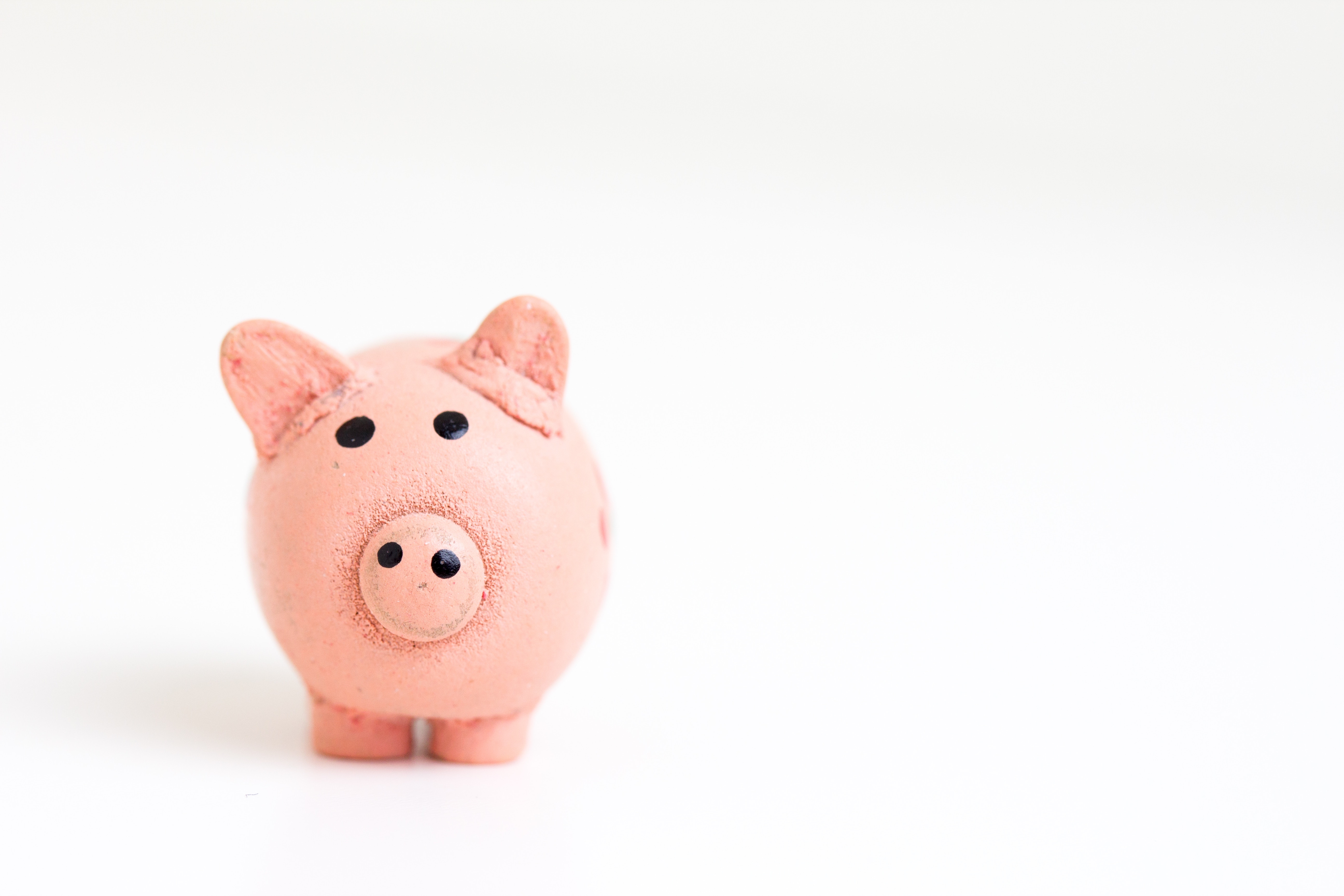
12 Comments
Amy Rutherford · July 8, 2020 at 2:21 am
Terrific spending recap and nice job on your 2nd year of travel. It seems like yesterday I was reading your first year recap!!! Hope to meet you along our journey some day.
Mr. Nomad Numbers · July 8, 2020 at 3:01 am
Thank you Amy! We would definitely love meeting with you guys in person. Sounds like we have a few things in common. Maybe we will regroup in Taiwan if the situation worldwide doesn’t improve and the country allow American to come in once they reopen their borders. It’s such a wonderful place to live in during this unprecedented time.
Cultivating Happiness · July 8, 2020 at 9:50 pm
I discovered your blog recently and really appreciate the level of detail you share about the nomadic lifestyle! I live in SF and don’t think I would fully give up my rent-controlled apartment but someday might sublet it for a few months each year for some slow travel. I didn’t realize the ACA subsidy could be THAT significant and your post inspired me to do some research. Super helpful, I was encouraged by what I learned. I look forward to following your adventures!
Mr. Nomad Numbers · July 9, 2020 at 1:34 am
Hi Cultivating Happiness! Thank you for stopping by. May I ask how you stumble upon our blog? Always curious to know where our readers are finding us 🙂
We also had a nice rent controlled apartment in SF (Started at $1.5K / mo back in 2008 for a 1BR top floor in Noe Valley). We knew that if we let it go we would not be able to come back in SF without having to pay a 2-3X increase for the same place due how how much the rent increases in SF since 2008z we considered subletting but this wasn’t an option for us as our landlord was very clear about that. If you have the option then that would be a great way to do some slow travel.
Now that we’ve been traveling for 2 years and seen so many place we don’t miss SF as much. We actually have find other places on this planet that we actually like better and would consider becoming our home in a few years (see step 4 in our life journey plan: https://www.nomadnumbers.com/our-life-journey/).
As for the ACA, yeah take a look. Keep in mind that if you hold a regular job in SF for a full year you might not qualify to full premium credit as we did. These credit as usually for people that are making low income in the city. The interesting part is that once you start traveling outside California though what is considered a low income in SF is actually quite a lot of money for the average person.
Cultivating Happiness · July 9, 2020 at 2:02 am
I first heard your interview on ChooseFI and then came to check out your blog!
I’m very lucky that my landlord has mentioned in the past that he is fine with us subletting, it’s a good option to test out other places before walking away from rent control. As you said, if I give it up, it is basically saying goodbye to SF for good and I’m not sure I want to permanently leave the wonderful community I have here. But who knows what the future holds 🙂
I was looking at ACA for post-FIRE so was curious about subsidies given expected dividends and long-term capital gains. I have a low cost structure even in SF so was pleasantly surprised how affordable ACA would be with the subsidies. Although who knows how much things could change in the next few years. I work in healthcare and it is a very dynamic space!
Mr. Nomad Numbers · July 9, 2020 at 3:37 am
Community is definitely something to think about when taking on a nomadic life. It has been one of our challenge on year 1 but year two has shown us that you can create a new community of like minded people while becoming fully nomadic.
We are still able to catch up with our community in SF (via hangouts or in person) but we have been noticing a drift as our focus has shifted from work / career to living a meaningful life that showed a few time in our interaction with that community. These people still remain our friends for who they are but it’s just an interesting observation we’ve made. We feels closer with our new community than our old community. Let’s see if the novelty of finding this new tribe dissipate or amplify over time. Something for you to keep in mind though 🙂
Our Freedom Years · July 13, 2020 at 12:04 am
Congrats on managing to fit so many great experiences and destinations into such a low budget! Very impressive. We are also going to slow our travel down considerably once we’re finally on the road again. That should help keep our expenses low although traveling with two poodles and all their accroutrement tends to drive up the cost!
Mr. Nomad Numbers · July 13, 2020 at 1:29 am
Hey Stephanie & Gillian. Slow travel is not only a way to lower your spending it’s also a wonderful way to make even greater and deeper connections with the place you visit. We have been already spending 4 months in Taiwan and this had made us think that 2-3 months per location (vs 1 month) might become our new normal in the future…
One follow up question for you two: How much « extra » would you guys say traveling with small dogs cost?
Our Freedom Years · July 15, 2020 at 7:36 pm
It’s hard to come up with an exact figure for traveling with our two little dogs but here are some of the items that drive up our overall costs:
– Type of airline we can fly with, because many of the low-budget carriers do not accept pets in cabin, so we need to choose higher priced airlines
– Bring our dogs in cabin with us…always an additional charge
– Cost to check bags, because our dogs count as our carry-on luggage
– Also some trains require a pet ticket
Of course, they’re totally worth it!
2020 Year-End Spending Report - Still traveling the world for half the cost of staying home during a pandemic! — Nomad Numbers · January 19, 2021 at 1:16 am
[…] 2nd Year of Nomadic Travel […]
Year 5 Nomad Travel - Back to Slow Travel (Part I - The highlights) — Nomad Numbers · July 10, 2023 at 2:06 pm
[…] 2nd Year of Nomadic Travel […]
Year 5 Nomad Travel - Back to Slow Travel (Part II - The numbers) — Nomad Numbers · July 18, 2023 at 12:21 pm
[…] 2nd Year of Nomadic Travel […]